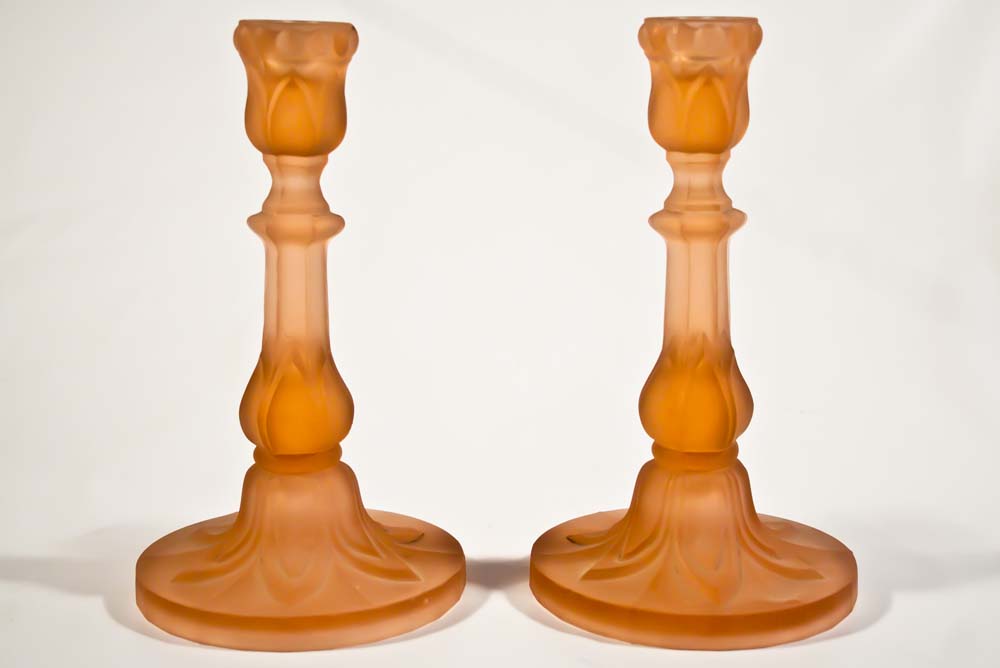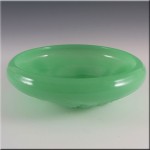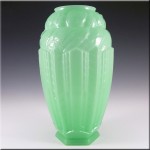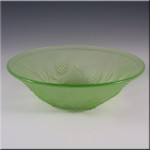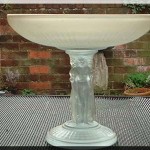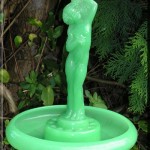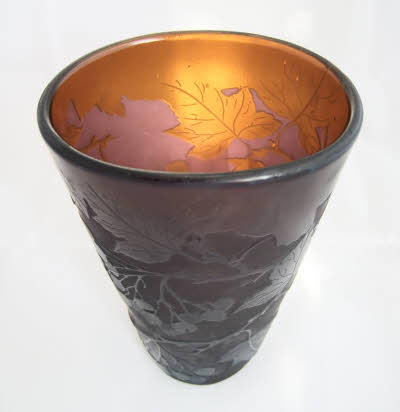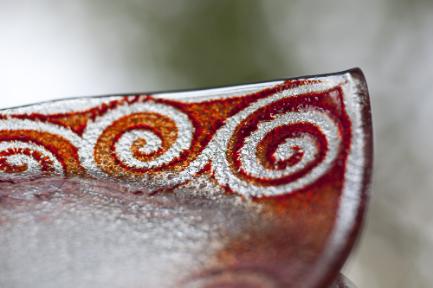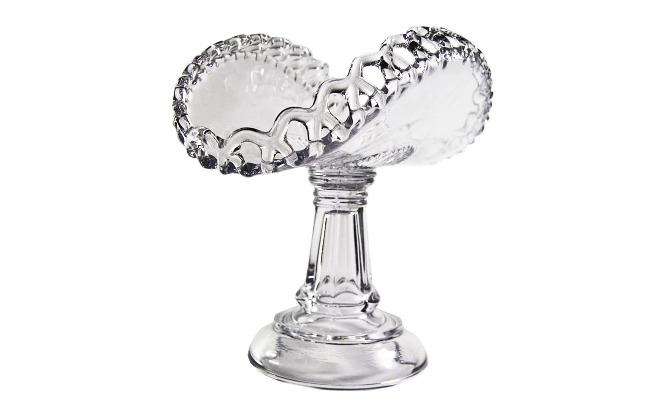Henry Greener – 1st Trademark
 The first chronicled production of glass in England was in 674 AD when the Venerable Bede described how glassmakers from Gaul were brought over to make windows for a newly built church and monastery in Sunderland. This church, St Peters in Monkwearmouth, Sunderland still stands today.
The first chronicled production of glass in England was in 674 AD when the Venerable Bede described how glassmakers from Gaul were brought over to make windows for a newly built church and monastery in Sunderland. This church, St Peters in Monkwearmouth, Sunderland still stands today.
There are no further records of glassmaking in Sunderland until the late 17th century when in 1697, the Sunderland Company of glassmakers founded the Wear Flint Glass Works in Southwick This is the site that in the mid 19th century was to be acquired by Henry Greener and his partner James Angus.
In 1857 Henry Greener left the employ of Sowerby in Gateshead and the following year started glassmaking in partnership with James Angus at the Wear Flint Glass Works in Sunderland, North East England. The company was known as Angus and Greener until Angus died in 1869. During that time they registered their first design on 21st December 1858. This was to be the first of 11 subsequent registrations.
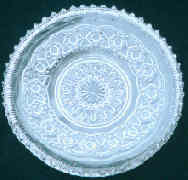 After his partner’s death, Greener continued to register designs in his own name. He also moved the business to a bigger site in Millfield, on the south bank of the River Wear in Sunderland and which was to become the home of James A. Jobling and Co. and eventually Corning Co. Ltd, which it remains today.
After his partner’s death, Greener continued to register designs in his own name. He also moved the business to a bigger site in Millfield, on the south bank of the River Wear in Sunderland and which was to become the home of James A. Jobling and Co. and eventually Corning Co. Ltd, which it remains today.
Greener were never as prolific as their Gateshead rivals, Sowerby and Davidson which makes surviving pieces all the more rare.
With the introduction of the Trademarks Registration Act in 1875 Greener instituted his own trade mark in the form of a demi-lion rampant facing left and with a star in its right paw.
Both Davidson and Sowerby were using heraldic trademarks around the same time. Davidson’s was very similar; a demi-lion rampant rising from a turret although no record is known of them having registered the mark. Sowerby’s trademark was a peacock head facing left and was registered within a year of the Act being passed.
A few years after Henry Greener died the business ran into financial difficulties, and was eventually sold off to its principle creditor James Augustus Jobling. Jobling was a Newcastle upon Tyne industrialist who owned the Tyne Oil and Grease Works and also had a major business supplying minerals, many of which went to the glassworks of Henry Greener.
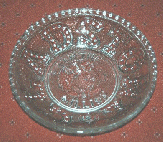 Jobling renamed the glassworks Greener & Co. in 1885 and introduced a new trademark of a demi-lion rampant with a halberd (a combined axe and spear) in its paws.
Jobling renamed the glassworks Greener & Co. in 1885 and introduced a new trademark of a demi-lion rampant with a halberd (a combined axe and spear) in its paws.
Until the turn of the 20th Century, Greener & Co. registered many designs for tableware and other decorative items, many of which may have had more than one pattern on them.
James Jobling did little to build his glass business in the years around the turn of the century and again the company ran into financial problems. Their saving came from him appointing his nephew Ernest Jobling-Purser as manager in 1902.
Jobling-Purser began by re-vitalising the company with an investment programme using technology from the USA and Germany. His most significant contribution however was to come when he acquired from the Corning Glass Co. the license to manufacture and market PYREX heat resistant glassware in Great Britain and the Empire (excluding Canada) in 1921.
It was this product range which enabled Jobling’s to grow and prosper throughout the depression years, however whilst the sales of PYREX soared the flint glass department fell into decline.
Throughout this period the pressed glass industry were imitating the more expensive cut glass but with the dawning of the 20th Century, glassmakers in continental Europe began to experiment with glass as an art form. Lalique, and others, using mechanised presses then finished glass by hand to produce pieces, which were beautiful but expensive. It was with this observation that Jobling’s entered the 30s and introduced a range of decorative Art Glass. The glass was to be much less expensive than hand finished glass yet sufficiently attractive that a higher price than normal for flint glass would be accepted.

